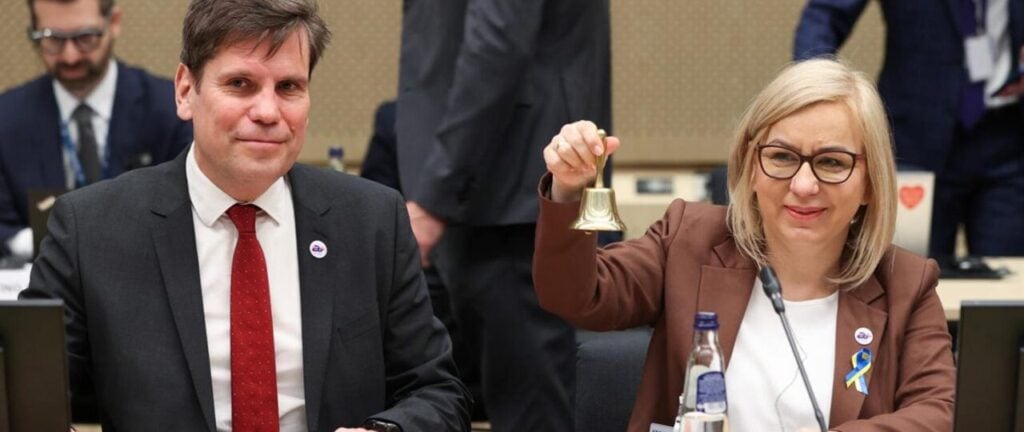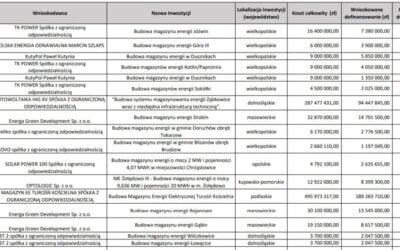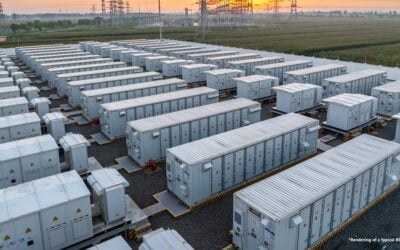
A double helping of big energy storage news items in Poland, with the government launching a capex support scheme for grid-supporting BESS and state-owned power producer PGE revealing its long-term deployment plans.
BESS to improve stability of electricity grid in Poland
A capex support programme targeting electricity energy storage for grid support has been launched by the National Fund for Environmental Protection and Water Management of Poland, which is overseen by the Ministry of the Environment.
The aim of the programme is to improve the stability of the National Power Grid (KSE) and energy security by supporting the construction of electricity storage facilities of at least 2MW/4MWh connected to the transmission and distribution (T&D) networks.
The funds come from the EU’s Modernisation Fund and was agreed under the bloc’s Temporary Crisis and Transition Framework (TCTF), introduced in response to the Russian invasion of Ukraine. The EU approved the funding in October 2024, saying it could support up to 5.4GWh of projects.
Try Premium for just $1
- Full premium access for the first month at only $1
- Converts to an annual rate after 30 days unless cancelled
- Cancel anytime during the trial period
Premium Benefits
- Expert industry analysis and interviews
- Digital access to PV Tech Power journal
- Exclusive event discounts
Or get the full Premium subscription right away
Or continue reading this article for free
A total of PLN 4.15 billion, or €992 million (US$1.07 billion), is available, split 90:10 between grants and loans. Grants can cover up to 45% of investment costs, 10%-20% more for smaller businesses, while loan financing (on preferential or market terms) can cover up to 100%.
Participants will need to provide all the technology for their own projects, including battery energy storage systems (BESS), inverters, transformers, fire safety and other protection systems, testing and commissioning, connection to the grid and accompanying infrastructure, and all the necessary software including BMS, EMS and data collection in line with EU standards.
The application window runs from 4 April to 30 May, 2025.
A local developer told Energy-Storage.news that EU money like this had previously been hard to unlock for Poland because its ruling Catholic right wing PiS (Law and Justice) party was reluctant to give in to certain conditions to obtain the funds. “The new government (since 2023) is pro-EU, so they unlocked those funds,” they said.
An online training session for applying will be held on 4 April, register here.
Power producer PGE to invest over €4 billion in energy storage
In related news, state-owned power producer PGE has claimed it will invest some 18 billion PLN (€4.3 billion) in energy storage over the next decade, deploying 10GWh of new capacity to bring its total portfolio of storage to 17GWh.
Some of that is made up of both new and existing pumped hydro energy storage (PHES) capacity, but a large chunk will be BESS.
Its first project is a 263MW/900MWh BESS in Zarnowiec, which will be supplied locally by batteries manufactured in LG Energy Solution’s plant in Wroclaw as reported by Energy-Storage.news on Monday.
“The development of storage projects is a guarantee of Poland’s energy security. The implementation of PGE’s ambitious investment plans will contribute to reducing the emission intensity of the Polish economy, and thus increase its competitiveness on the European and global markets,” commented Jakub Jaworowski, minister of state assets.
Paulina Hennig-Kloska, minister of climate and environment, pictured above, said: “Renewable energy sources are playing an increasingly important role in the National Power System, already now influencing the reduction of wholesale energy prices. Thanks to legislative changes and support programs offered by the Polish government, the role of RES will only grow in the coming years. Along with it, the importance of energy storage systems will grow.”
“Expanding their power and capacity, in addition to developing the grid, are priorities of the energy transformation. To meet this challenge, we are stimulating the development of the energy storage sector on a small and large scale.”






